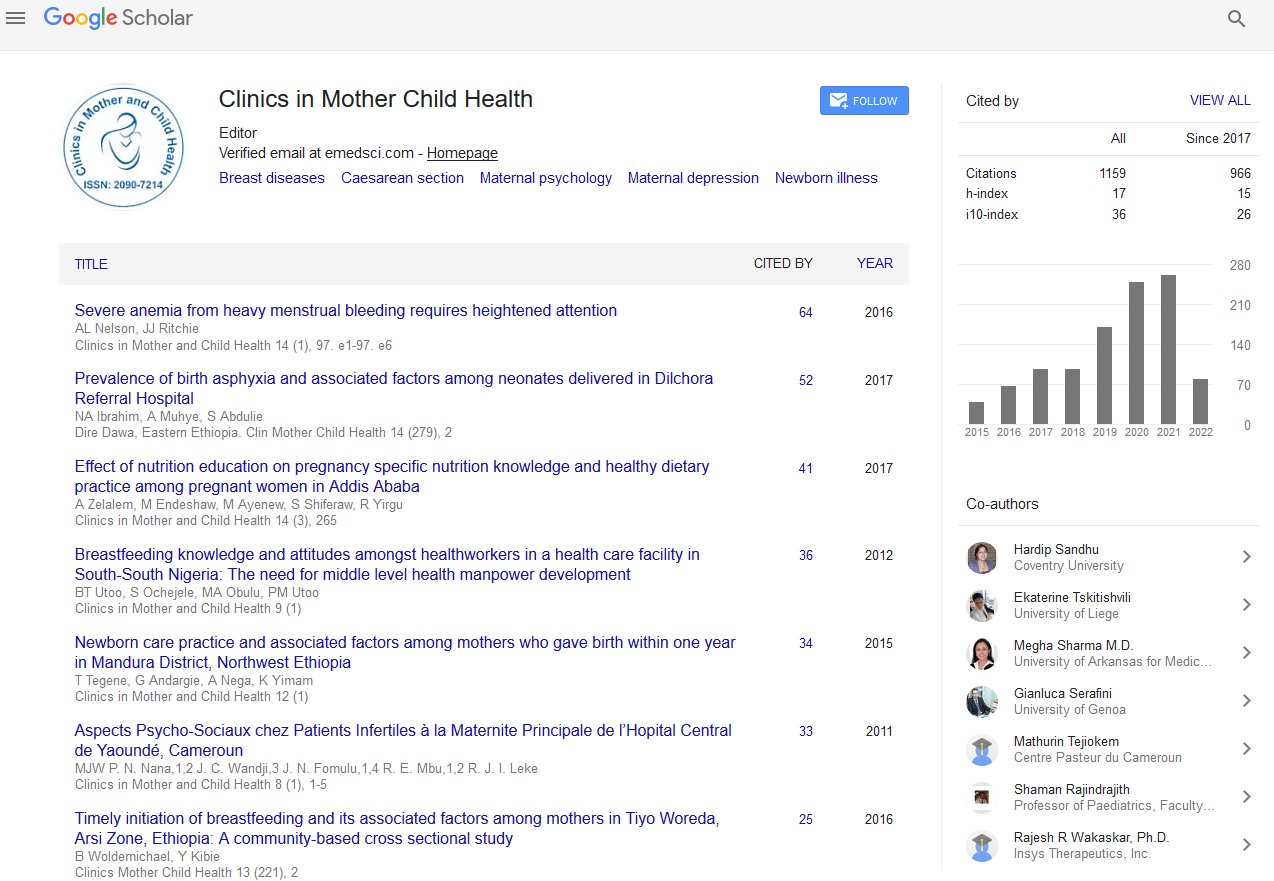Indexed In
- Genamics JournalSeek
- RefSeek
- Hamdard University
- EBSCO A-Z
- Publons
- Geneva Foundation for Medical Education and Research
- Euro Pub
- Google Scholar
Useful Links
Share This Page
Journal Flyer

Open Access Journals
- Agri and Aquaculture
- Biochemistry
- Bioinformatics & Systems Biology
- Business & Management
- Chemistry
- Clinical Sciences
- Engineering
- Food & Nutrition
- General Science
- Genetics & Molecular Biology
- Immunology & Microbiology
- Medical Sciences
- Neuroscience & Psychology
- Nursing & Health Care
- Pharmaceutical Sciences
Abstract
Intrauterine Contraceptive Device Insertion during Cesarean Section versus Conventional Application: A Randomized Clinical Trial
Sara A Salem, Hamada AA Ali, Maha A Katta, Nesreen AA Shehata, Mohamed AM Eweis and Gaber K Hussein
Objective: To compare immediate intrauterine contraceptive device (IUCD) (Copper T 380A) insertion (within 10 minutes of placenta delivery) after caesarean section versus conventional application.
Method: The study involved 200 women who were booked for elective cesarean section and wanted IUCD insertion in Department of obstetrics and gynecology, Beni Suef University Hospital, Egypt. Participants were randomly assigned for IUCD insertion at the time of cesarean delivery or 6 weeks postpartum. The primary outcome was IUCD expulsion rate.
Results: Follow-up of women within 6 months of IUCD application showed that expulsion rate was 10/94 (10.6%) in immediate group but 4/95 (4.2%) in conventional group with no statistical significance between the studied groups. Pelvic infection rate was 2.3% and 2.2% respectively, a difference that was not statistically significant. Also there was no significant difference in bleeding patterns along the 6 weeks follow up. Continuation rate was 75/94 (83%) in immediate group and 83/95 (87.4%) in conventional group. Device tail visibility at 1 week, 6 weeks and 6 months postpartum was significantly lower in immediate group than conventional group (p value <0.0001).
Conclusion: Insertion of Copper T 380A IUD during C-section is safe and effective with expected low expulsion, and high continuation rate as in conventional method.
Clinical trial registry: clinicaltrials.gov NCT02674139.
Synopsis: Insertion of Copper T 380A during C-section is safe and effective with expected low expulsion, high satisfaction and continuation rates. It should be offered to mothers planned for elective cesarean.


